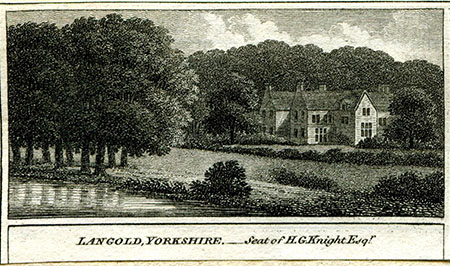Peacock’s Polite Repository
/Typical first page from 1804 edition.
A pocket diary is perhaps not an obvious place to look for evidence of a landscape designer’s work, but in the bicentenary celebrations of Repton’s life and work in 2018 the Peacock’s Polite Repository proved to be an invaluable starting point for much new research. The Repository which was produced annually from c.1790 – 1870s, usually measured c.11.5 by 7.4cm and was presented in a variety of ways. Some were bound in morocco, some came in leather wallets, some in a silk slip case. All contained useful information such as lists of government officials, the senior military, members of the nobility, M.P.s and Royal birthdays. Each month had a miniature engraving at the top of the page with a line for each day below – sometimes on only one page, sometimes on a double spread. The print run was of 7,000 copies annually.
Humphry Repton must have entered into an agreement with William Peacock in 1789 since the 1790 edition features 6 of his drawings. These drawings were engraved by John Peltro (1760 – 1808) and it is possible that Repton was dissatisfied with the quality of his successor’s work since he seems to have stopped providing drawings soon after Peltro’s death in August 1808. Repton himself calculated that 26,250 reproductions of his work appeared in Peacock’s.
Example Wyddial Hall, Herts, showing use as a diary.
Although a proof inscribed ‘Proof Impressions of Plates engraved from Drawings by H. Repton of scenery improved under his direction’ has survived, lack of other evidence has led scholars to doubt that inclusion in Peacock’s was definitive evidence that Repton worked at the property. During the country wide research conducted by many County Gardens Trusts leading up to the bicentenary several examples came to light of hitherto unknown ‘improvements’ by Repton, which did suggest he worked at the sites he illustrated.
Langold, on the Nottinghamshire/Yorkshire border, which appeared in the 1807 edition is good example. The house was demolished in 1817 and it had been assumed Repton did no work here. However a researcher investigating a different property came across letters in the Derbyshire Record Office which showed not only that Repton produced a design for the landscape in a Red Book, but that he also had an important role in its execution.
The letters were from Frances FitzHerbert to her maternal uncle and recorded Repton’s involvement from September 1805 when he first arrived and ‘put down some stakes for the continuation of the Lake’, to August 1807 when she wrote:
‘…..Our own Lake here is quite finish’d but it has never been quite full, this quite enough so to shew us, what a great Improvement it is to the Place and now Mr R is going to take down several Trees to shew [sic] it, from different parts, and plant other to hide the Head…’
The letters show that far from just drawing up a design and then leaving it to be executed – or not - by the owner, Repton was involved over a protracted period and in a practical way. Possibly the most exciting discovery was that a Red Book (since lost) was produced in 1806:
Example, Langold, 1807.
Mr Repton has sent us the red Book, and his intended Improvements will add much beauty indeed to the Place. He very cleverly draws the Place as it is, then makes his alterations, which slide within, so that in a moment you see the different effect, but my Aunt begs I will not tell you about it, as she shall wait for the pleasure of shewing [sic] you, herself.
The estate was broken up and in the 1920s houses for the miners at Firbeck Colliery were built at its edge. In 1968 it was developed as a Country Park by Bassetlaw District Council who had no idea of the historical importance of the landscape they were managing until the researchers from Yorkshire Gardens Trust alerted them. Information boards have been promised and knowledge of Langold’s significance will influence any future plans for development. An observable instance of the past informing the future and all started by a tiny image and a chance encounter!




